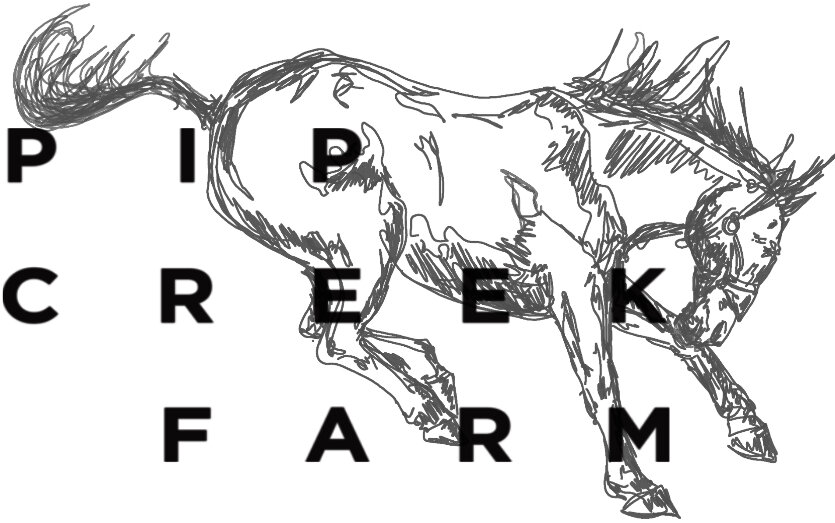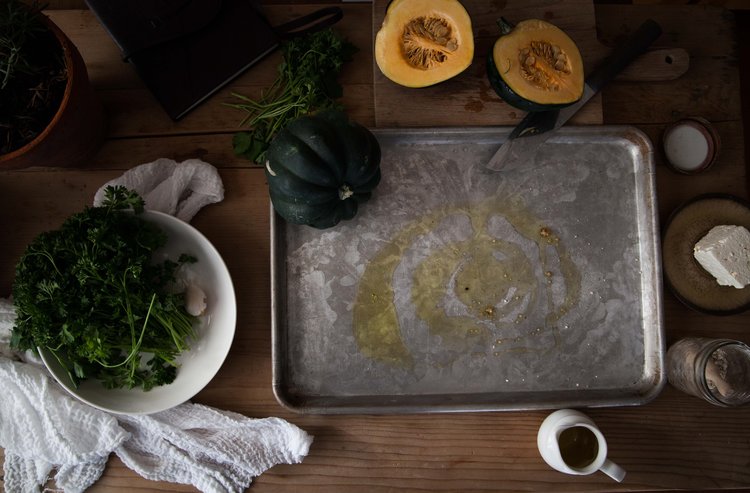Simple Roasted Squash with Feta and Rosemary
Out of all the things in my garden, squash is the easiest. I'll plant a few hills every year of a new variety, something blue or white or slightly flattened just to keep a bit of excitement. Truthfully though, the entire plot devoted to kitchen garden would be overrun with volunteer squash and pumpkin plants if I wasn't a little cutthroat with my hoe. I always feel a bit bad when I know the vines will be a bit exultant, all tangled up, latched to the ground and still reaching up to the highest points of the lilacs, raspberries, currant and bean tripods. The whole garden becomes a carpet of cupped large leaves, spread to the sun's rays.
And if we treat them right at harvest time, the squash are quite happy to camp down in our cold storage. By treating them right I mean not subjecting them to hard frosts that render them into mush like we did last fall. Completely our bad. Although, Bella, the red hog was more than a might pleased at our disorganization. Our loss, her tasty win.
All of this is to convince you, if you are still hedging, that squash are the ideal pick for growing and keeping, and then eating. I thought I'd share a flexible squash recipe that makes for a good, stand-alone meal or as an undemanding side for having people over. I'm leaving it loose and easy to meander over to one way or the other, because I am not a staunch follower of recipes. I’m not big on being fenced in. I'm documenting one method that worked well for me, that would likely work well enough for you too if you're inclined. But please don't get too hung up on details. Make it suit you. Scraped down to the essentials this recipe requires some sort of fat to add depth, a stove or oven and squash. The feta, parsley, rosemary and seasonings make for a more elaborate experience.
Drizzle a baking pan with olive oil and salt. I used a smoked salt we had done over applewood. Cut the squash in half from stem to tail and place flesh down. I usually seed it out after the cooking's done. Bella the hog thinks the seeds are some of the nicest things to snack on. I do my cooking at a higher temperature more out of habit of trying to get stuff done. I am honestly not try to burn my kitchen down or testing smoke detectors (which is a good thing to do, says this fire chief’s wife). I cooked them at 400 for about forty-five minutes.
When they are soft, take them out. Let them cool a bit so it's easier to work with them. Flip them over, seed them and slide a knife through to make a hatchmark. Gently scoop out the cut, cooked squash into a shallow bowl.
Cut up some flat leaf parsley, about 1-2 tablespoons, and a few leafs of rosemary. Because the rosemary isn't cooked, a very small amount is all that's needed to cut through. Mix with salt, freshly cracked pepper, 2-3 tablespoons of crumbled feta and a swirl of good extra virgin olive oil. Pile on top of the squash.
If you like too, you can peel and cube the squash first, drizzle with oil and then roast. Halfway through you can add the rosemary and a minced garlic clove. This version did well when we had our neighbours in for a Sunday impromptu dinner after an afternoon of skiing and skating. It's what works for you, what you thinkin you might like best. It’s a good lunch to put in while you are home puttering or in the studio. Or if you are up early you can make it to take with you to work. Take the basics and make it work for you, wherever you might be headed.






